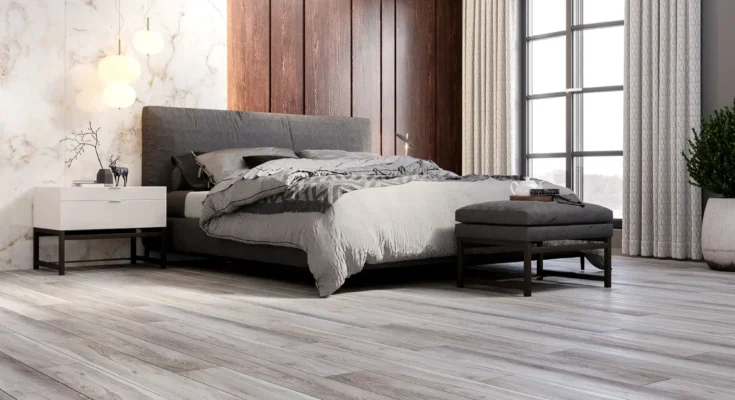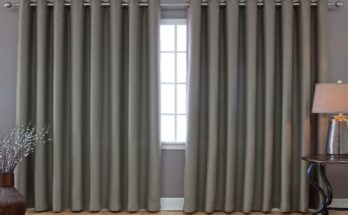Vinyl flooring’s strength, adaptability, and visual appeal have made it a more and more preferred option among homeowners. It can be difficult to choose the best vinyl flooring for your home because there are so many different types and alternatives to consider. Through the provision of useful information on vinyl flooring kinds, installation techniques, maintenance advice, and other topics, this comprehensive guide seeks to streamline the decision-making process.
Vinyl Flooring Types
1. Premium Vinyl Flooring (LVP)
Luxury Vinyl Plank has a genuine wood grain appearance that resembles hardwood flooring. It may be laid in a number of ways and is available in different plank sizes, giving it a unique and elegant appearance. For places where there is a lot of moisture, such kitchens and bathrooms.
2. Premium Vinyl Flooring (LVT)
The look of ceramic or real stone is what Luxury Vinyl Tile aims to imitate. Because it comes in so many different sizes, colors, and patterns, homeowners may design the exact look they want for their rooms. For spaces like bathrooms and kitchens where spills and wetness are frequent, LVT is a popular option.
Explore Best Vinyl Flooring Shop: “Vinyl Flooring Dubai | No.1 Vinyl Floor Shop – Fixing Expert“
3. Flat Vinyl
Large, continuous rolls of flooring that can be cut to fit any size room are known as sheet vinyl. It is a reasonably priced choice with a variety of designs, including patterns that mimic stone, tile, and wood. Sheet vinyl is a sensible option for high-traffic areas since it is simple to maintain and clean.
4. VCT, or vinyl composite tile
Vinyl Composite Tile is a frequently used low-cost utilized in business environments. Its tough and long-lasting flooring surface is created by colored vinyl chips inserted in a vinyl foundation. Suitable for locations with high foot activity, VCT comes in an array of colors.
Things to Take Into Account While Selecting Vinyl Flooring
1. Firstly, durability
Take into account the vinyl flooring’s longevity, particularly in high-traffic areas. Due to their reputation for resilience, LVP and LVT are perfect for hectic homes. Additionally, search for goods that have an additional layer of wear to protect them from stains and scratches.
2. Resistance to Water
Choose water-resistant vinyl flooring options when placing it in locations that are prone to moisture, such as basements, kitchens, or bathrooms. Since LVP and LVT are naturally water-resistant, they are appropriate for areas where spills may occur and humidity are typical.
3. Installation Technique
There are several ways to lay vinyl flooring, such as glue-down, peel-and-stick, and click-and-lock. Select an installation technique based on your level of experience and the particular needs of the space. For do-it-yourself jobs, click-and-lock methods are common, but glue-down alternatives offer a more long-term fix.
4. Financial Matters to Take Into Account
Vinyl flooring is affordable and suitable for a wide range of budgets. Even while luxury choices might cost more, they frequently have better durability and a more genuine appearance. Take into account the limitations of your budget and look into choices that combine affordability and quality.
5. Preferences for Aesthetics
Vinyl flooring is available in a multitude of designs, hues, and patterns. Take into account the general design of your house and select a flooring choice that works well with your decor. Every taste can be satisfied with a vinyl flooring alternative, regardless of whether you like the smoothness of tile or the coziness of wood.
Installation Advice
1. Get the subfloor ready
Before laying vinyl flooring, make sure the subfloor is clean, dry, and level. The longevity and look of the vinyl can be impacted by any flaws in the subfloor.
2. Let the Flooring Adjust
Before installing, give the vinyl flooring at least 48 hours to adjust to the humidity and temperature of the space. This aids in avoiding post-installation problems like warping or buckling.
3. Adhere to the manufacturer’s instructions
Installing certain vinyl flooring products may be necessary. To guarantee a successful and long-lasting installation, carefully follow the manufacturer’s instructions.
4. Make Use of the Correct Equipment
Purchase the necessary equipment, such as a utility knife, straightedge, and tapping block for click-and-lock installations, to install vinyl flooring. The installation procedure might go more smoothly and precisely if you have the proper instruments.
Upkeep and Concern
1. Continual Cleaning
Maintaining vinyl flooring is not that difficult. Frequent vacuuming or sweeping helps shield the surface from scratches caused by dirt and debris. Use a damp mop and a light vinyl floor cleaner for a more thorough cleaning.
2. Steer clear of dangerous chemicals
Vinyl flooring can be harmed by the use of harsh chemicals or abrasive cleaning. For optimal results, use the goods that the manufacturer recommends.
3. Guard Against Scrapes
To avoid dents and scratches, use furniture pads underneath large furniture. Think about utilizing area rugs or mats in high-traffic areas to prevent undue wear on the vinyl.
4. Quickly deal with spills
Despite the water resistance of vinyl flooring, spills must be cleaned up right once to avoid any possible damage. Spills should be cleaned up as quickly as possible using a moist cloth.
Conclusion
Considerations for selecting the ideal vinyl flooring for your house include kind, durability, installation technique, cost, and design preferences. Luxury Vinyl Plank and Luxury Vinyl Tile, with its wood-like charm and stone-inspired elegance, respectively, are two options for vinyl flooring that are both elegant and practical for homes. Vinyl flooring is beautiful and durable, and you can enjoy it for many years to come in your house by using proper installation procedures and routine care.




